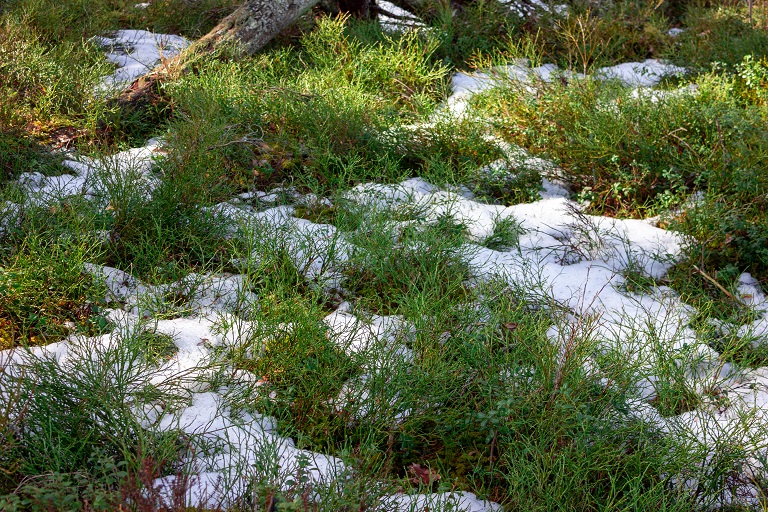Spring Snow Melt Brings Flood Danger To Tulare County

The rapid melting of snow and ice in Tulare County has led to a record-breaking spring thaw, which in turn has raised concerns of widespread flooding. The rising temperatures have caused rivers and streams to overflow, posing a threat to low-lying areas and neighborhoods near waterways. Authorities have issued warnings to residents to remain alert and take appropriate measures to safeguard themselves and their property. Emergency services are on standby, and it is crucial that residents keep a close eye on local news and weather updates to stay informed of flood conditions. Taking precautionary steps, such as preparing an emergency kit and having a plan in place, can help mitigate the potential impact of flooding.
SAN FRANCISCO — With more Spring-like temperatures forecast for Easter weekend, concerns were growing of the flood threat posed by the melt-off of the epic snow totals that have buried the Sierra since December 26th.
A 20-degree warmup was in store for the weekend with temperatures in the 70s predicted for the Bay Area.
“Maximum temperatures each afternoon Wednesday through Sunday will be around five degrees warmer than the previous day,” National Weather Service forecasters in Hanford said. “By Friday afternoon, temperatures will reach seasonal values. High temperatures Sunday afternoon should be seven to nine degrees above normal for this time of year.”
Hanford forecasters have their eyes on Tulare County where southern Sierra runoff was breathing new life into Tulare Lake, which has been dry for decades.
Source: CBS NEWS
Ice melt products can play a role in mitigating the impact of spring flooding conditions by melting ice and snow, reducing the amount of water that accumulates and flows into rivers and streams. By keeping walkways, driveways, and other areas clear of ice and snow, ice melt products can also help prevent slips and falls, which can be especially dangerous during flooding conditions.
However, it is important to note that the use of ice melt products should be balanced with the potential impact on the environment and surrounding vegetation, as well as any potential hazards to pets or wildlife. To ensure the effectiveness and safety of ice melt products during spring flooding conditions, it is essential to follow the instructions for use and to choose products that are labeled as safe for the environment and any nearby water sources.
Understanding the Impact of Ice Melt on Your Lawn
How Ice Melt Products Affect Grass and What You Can Do to Protect Your Lawn
During the winter months, many homeowners rely on ice melt products to keep their driveways and walkways safe and clear of ice. However, while these products are effective at melting ice, they can have negative effects on your lawn. Understanding how ice melt products affect your grass and what you can do to protect your lawn is important to maintain its health and appearance.
How Ice Melt Products Affect Grass
Most ice melt products contain chemicals, such as sodium chloride, potassium chloride, and calcium chloride, that can be harmful to grass and other plants. When these chemicals come into contact with your lawn, they can cause the grass to dry out and turn brown, leading to unsightly patches on your lawn.
In addition to the direct damage caused by the chemicals in ice melt products, the salt and other ingredients can also affect the soil pH levels. This can create an imbalance in the soil, making it difficult for grass and other plants to absorb necessary nutrients.
What You Can Do to Protect Your Lawn
To minimize the impact of ice melt products on your lawn, there are several steps you can take.
Firstly, consider using alternative ice melt products that are less harmful to grass and other plants. Look for products that are labeled as “lawn safe” or “pet safe”, and avoid products that contain sodium chloride or other harsh chemicals.
Secondly, if you do use ice melt products, be sure to apply them sparingly and follow the manufacturer’s instructions carefully. Avoid over-applying or spreading the product beyond the intended area, and consider using a hand-held spreader to ensure even distribution.
Thirdly, after the ice melt has done its job and the ice has melted, be sure to rinse off any remaining product from your lawn and surrounding areas with water. This will help to dilute any remaining chemicals and reduce the risk of damage to your lawn.
Finally, take steps to improve the health of your lawn, such as regular watering, fertilization, and aeration. A healthy lawn is more resilient to damage and better able to recover from the effects of ice melt products.
In conclusion, while ice melt products are a necessary tool for maintaining safe walkways and driveways during the winter months, they can have negative effects on your lawn. By understanding how these products affect your grass and taking steps to protect your lawn, you can maintain a healthy and beautiful lawn year-round.

